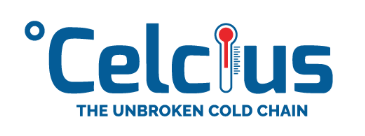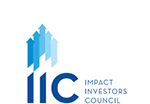|
Enterprise Showcase
Dialogue with Swarup Bose, Founder and CEO, Celcius Logistics
|
|

1
What were the key structural gaps in India’s cold-chain logistics ecosystem—particularly in agriculture—that led to the creation of Celcius? How have these challenges evolved with your on-ground experience? What differentiates your approach from traditional cold logistics providers?
|
When we launched Celcius in 2020, it was clear that India’s cold-chain logistics, especially in agriculture, was broken at multiple levels. There was limited visibility, fragmented infrastructure, and an overwhelming dependence on manual processes. Most farmers and small-scale producers simply didn’t have access to temperature-controlled storage or reliable transport, especially in Tier II and III cities. As a result, nearly 30-40% of perishable produce would spoil before it even reached the market. This was a food security problem.
The pandemic further exposed the brittleness of our cold supply chain. While the need for reliable, temperature-sensitive logistics was rising, particularly in sectors like agriculture and pharma, the existing systems were too rigid, opaque, and unequipped to scale.
That’s where Celcius came in. We were reimagining cold chain logistics as a tech-first, vertically integrated platform. Our proprietary Transport Management System, Warehouse Management System, and Inventory Management System, all built in-house, bring end-to-end visibility and control over temperature-sensitive goods in real time. We’ve developed infrastructure that’s modular and scalable, reaching over 600 cities with more than 4,000 reefer vehicles, 150+ cold storage points, and 250+ hyperlocal delivery agents.
What sets us apart is that we are constructing the digital foundation of India's cold chain. We're using data to inform decisions at every stage of the supply chain, from blockchain-based traceability for pharmaceutical and agricultural products to AI-enabled route optimization. We provide a unified, tech-integrated system that links farms, factories, warehouses, and retail endpoints via a single, smooth platform, in contrast to traditional logistics companies that function in silos.
Most significantly, we're opening up cold chain infrastructure to small players that have traditionally been shut out of formal logistics networks, such as farmer cooperatives, regional agri producers, and direct-to-consumer brands. At Celcius, we're constructing that future—an inclusive, transparent, and interconnected cold chain for India.
|
2
Celcius positions itself as a full-stack cold-chain marketplace. Could you walk us through how your model works across aggregation, technology, and service delivery? What differentiates it from traditional logistics providers?
|
We’ve built India’s first full-stack cold-chain marketplace, which is a digitally integrated ecosystem that connects all stakeholders in the temperature-controlled supply chain. By combining aggregation, proprietary technology, and end-to-end service delivery, our model enables us to address cold logistics issues comprehensively rather than haphazardly.
1. Aggregation:
We started by bringing together the highly fragmented and underutilized assets in India’s cold-chain sector, including reefer vehicles, cold storage facilities, and last-mile delivery agents, and aggregating them on a single digital platform. Today, we have a vast network, and this aggregation allows us to offer a wide range of reliable, temperature-controlled logistics solutions on demand, something traditional players haven’t been able to scale efficiently.
2. Proprietary Technology:
What makes us unique is our robust in-house tech stack, built specifically for cold-chain use cases. This includes a Transport Management System (TMS), Warehouse Management System (WMS), and Inventory Management System (IMS) that offer real-time temperature monitoring, route optimisation, predictive analytics, and traceability. Our platform also integrates IoT devices, AI-based planning, and blockchain for secure tracking, particularly for sensitive goods like vaccines, meat, seafood, and fresh produce.
3. Service Delivery:
We manage logistics end-to-end, from first-mile pickups at farms or factories to cold storage, line-haul transportation, and last-mile delivery at retail endpoints or customers’ doors. This ensures quality assurance, reduced spoilage, and time-efficient delivery, all while maintaining consistent temperature control throughout the journey. Our clients range from large pharma companies and QSR chains to FPOs and regional agri businesses.
We differ from more established logistics companies in that we provide visibility, flexibility, and intelligence in addition to capacity. Conventional models function in isolation, frequently involving manual coordination and a lack of transparency. Everything is centralized digitally. Hence, by streamlining cold supply chains through aggregation and smart technology, we’re not only reducing inefficiencies but also making cold-chain logistics more accessible, affordable, and sustainable for businesses of all sizes.
|
3
Smallholder farmers and FPOs have historically lacked access to reliable cold-chain infrastructure. How does Celcius make this infrastructure more affordable and accessible for them? What models have worked well in enabling adoption in its technology-heavy business model?
|
Smallholder farmers and FPOs are the backbone of India's agricultural economy, but they have historically been denied access to dependable cold-chain infrastructure because of high costs and poor connectivity. We at Celcius are aware of this, and our platform is designed to change it.
By adopting an asset-light, tech-first approach, we aggregate underutilized cold-chain assets such as Reefer trucks and storage facilities onto a centralized digital platform, making them discoverable and accessible even in remote rural areas. This aggregation model allows us to offer services at significantly lower entry costs, eliminating the need for farmers or FPOs to invest in expensive infrastructure.
In addition, we partner with local entrepreneurs to set up micro cold-storage hubs near farming clusters, which serve as the first point of collection and consolidation. These decentralized nodes help reduce wastage at the farm gate and bring produce closer to the market with proper temperature control. Our AI-enabled route optimization and load sharing tools ensure that transportation is not only cost-effective but also scalable, enabling multiple FPOs to pool consignments and access shared logistics at a fraction of the usual cost.
Over the past few years, we’ve seen encouraging adoption, particularly in Tier III and IV markets, where our digital cold-chain network now services over 600 cities and 4,000+ vehicles. Farmers using our platform have reported a reduction in spoilage by up to 30% and better price realization due to improved shelf-life and market access.
Ultimately, our goal is to democratize cold-chain logistics and bring farm-to-fork efficiency to even the smallest growers, empowering them with the tools to participate fully in high-value supply chains.
|
4
Data intelligence and traceability are becoming central to cold chain efficacy. Can you share use cases where predictive analytics, IoT-based monitoring or blockchain have reduced spoilage rates, improved route optimization, and enhanced shipment visibility? Is that something Celsius plans to directly integrate into its business model?
|
Data intelligence and traceability are essential components of our approach to redefine cold chain logistics and not just features. Our platform is designed to proactively address long-standing inefficiencies in the perishable supply chain by utilizing blockchain, IoT, and predictive analytics.
Through IoT-enabled sensors and RFID tagging, we offer real-time monitoring of temperature, humidity, and geolocation, ensuring that perishable cargo stays within the required thermal profile throughout its journey. This level of transparency has directly reduced spoilage rates, particularly in sensitive segments like dairy, fresh produce, and pharmaceuticals.
Our predictive analytics uses historical and real-time data to dynamically optimize routes, avoid delays, and match demand with available cold-chain capacity. Looking ahead, blockchain integration is a natural evolution for us. It will enable secure, tamper-proof records of each shipment’s journey, building trust and traceability. This is particularly critical in export-oriented cold chains and in pharma logistics, where compliance and quality assurance are non-negotiable.
|
5
Your recent expansion into multimodal cold logistics signals a deeper integration across the value chain. How do you balance an asset-light aggregator model with the stringent end-to-end temperature assurance, especially across rail and air corridors and small local transporters?
|
A tech-first, partner-driven strategy is needed to strike a balance between strict temperature assurance and an asset-light aggregator model. Regardless of the mode – road, rail, or air – Celcius has developed a single digital platform that combines cold storage, first-, mid-, and last-mile transportation. All of our network's assets, whether they are owned or run by partners, are IoT-enabled and continuously monitored. This enables us to uphold visibility, enforce standard operating procedures, and guarantee remedial action in the event of deviations.
Our role is to set the benchmark through certified SOPs, regular audits, route simulations, and training, so that even small local transporters operating under our network adhere to pharma- and food-compliant standards. For long-haul corridors like rail or air, we plan for contingencies using predictive analytics and leverage multimodal routing to maintain both efficiency and integrity. The goal is seamless orchestration, ensuring that no matter who’s handling the shipment, the temperature integrity remains uncompromised from origin to destination.
|
6
Celcius aims to build an ‘unbroken cold supply chain’ to ensure food security, linking logistics directly to national welfare. How do you measure the societal impact of reduced waste and improved food access, and how has this influenced engagement with funders and policymakers?
a. Celcius’s Vahaan Vikas Yojana enables refrigerated hyperlocal delivery via small vehicles—how has that impacted spoilage and fulfilment times in metro vs tier‑2/3 markets
|
Our vision of creating an “unbroken cold supply chain” goes beyond business efficiency; it’s about national food security and socio-economic impact. To measure this, we track key metrics such as spoilage reduction percentages, on-time fulfilment rates, and load optimization across regions. For instance, by digitizing the cold chain and enabling end-to-end temperature monitoring, we've helped reduce post-harvest and last-mile spoilage by up to 8–10% in certain perishable categories. This not only prevents losses for producers but ensures better food availability for end consumers.
Our data-rich platform offers valuable insight into gaps in infrastructure, enabling smarter policymaking. This has facilitated meaningful conversations with both funders and policymakers who increasingly see cold logistics as critical infrastructure for public health. We’ve seen this reflected in the enthusiastic uptake of initiatives like the ‘Vahan Vikas Yojana,’ which lowers the entry barriers for small transporters, creating both livelihood opportunities and logistical reliability.
Specifically, the deployment of VVY-enabled refrigerated vehicles in hyperlocal and last-mile delivery has had a measurable impact. In metro markets, it has led to a 20–25% reduction in average fulfilment time for temperature-sensitive goods, while in Tier 2 and 3 cities where cold logistics are often underdeveloped, it has helped cut spoilage rates by as much as 12%, significantly improving food access and product shelf life. By empowering smaller players with training, financial support, and guaranteed business pipelines, we’re not only scaling logistics capacity but also nurturing an inclusive, tech-driven ecosystem that serves both economic and societal goals.
|
|
|
Swarup Bose, Founder and CEO, Celcius Logistics
Swarup Bose, Founder and CEO of Celcius Logistics, is a visionary leader transforming India's cold chain logistics industry with innovative tech solutions. With over 20 years of experience across cold chain logistics, manufacturing, and transportation, Swarup is driving the digital transformation of this crucial sector. His goal is to create the nation’s largest and most efficient network of cold chain vehicles and warehouses, catering to businesses in even the most remote areas.
About Celcius Logistics
Celcius Logistics, founded during the COVID-19 pandemic, is India’s leading 3PL cold chain solutions provider and largest network of cold storage and reefer vehicles. Headquartered in Navi Mumbai, it offers proprietary TMS, WMS, and IMS technology, integrating reefer logistics and cold storage warehousing. Serving sectors like e-commerce, quick commerce, horeca, modern trade, pharmaceutical, dairy & other allied industries, Celcius ensures seamless connectivity between manufacturers and transporters via its advanced SaaS platforms.
|
|
About Impact Investors Council:
Impact Investors Council, India (IIC) is a member-based national industry body formed with an
objective to build and strengthen the impact investing eco-system in India. To know more about our work visit https://iiic.in or reach out to secretariat@iiic.in
|
Disclaimer: Data and Information in this newsletter is made available in good faith with the exclusive intention of helping market and ecosystem players, policymakers and the public build a greater
understanding of the Indian impact investing market. The data is collated from sources believed to be reliable and accurate at the time of publication. Readers are urged to exercise independent judgment and diligence in the
usage of this information for any investment decisions
Some of the information provided in this newsletter is supplied by third parties. It is important that all users understand that third party information is not an endorsement of any nature and has been put together with the
sole purpose of benefiting stakeholders.
|
| Unsubscribe |
|
|
|


